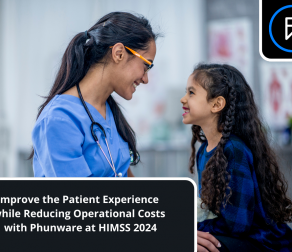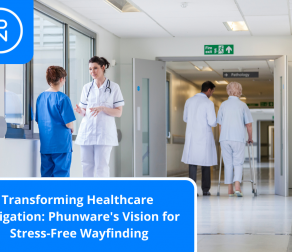Patient experience = customer experience. That’s the bottom line. Literally—it’s not just about Medicare reimbursement. In a recently released 2015 benchmarking survey by The Beryl Institute, nearly 90% of consumers said that patient experience was “extremely important” in healthcare. 75% said that it would be “extremely significant” as they made future healthcare decisions.
As you’re looking for big and small ways to improve the hospital experience for patients and visitors, don’t overlook the power of a branded mobile app. Here are seven unexpected ways your facility can use an app to help patients and visitors feel more positive.
1. Solve two key problems: “I don’t know how to get there” and “I don’t know where to park.”
Sure, patients and visitors can enter the hospital address into the map/navigation app on their smartphones. But that only gets them to the general area. By incorporating navigation into your mobile app, you can guide patients and visitors on a direct path from their starting location to the most convenient parking lot and right into the correct entrance—smoothly, confidently and comfortably.
2. Reduce the confusion involved in getting around the hospital—and make it personal.
The same in-app navigation technology that guides patients to your door can also help them navigate through the hospital itself. Once the patient or visitor enters your hospital, the app view can shift to a map of your facility, with the familiar blue dot guiding the user directly to the appropriate office, clinic, waiting room or patient room. How much more comfortable would patients and visitors feel with turn-by-turn directions, as if a guiding friend were walking alongside them, making sure they arrived stress-free and on time?
This same navigation can help patients and visitors find your pharmacy or lab, if needed, or the gift shop, coffee shop, chapel, cafeteria…all without having to “bother” any of your staff. The app can stay current with any changes to the hospital environment, such as relocated offices, elevator repairs, remodeling detours, etc. And when it’s time to head out, your app can guide them back to the parking lot and to their next destinations.
Download our eBook to learn more about just how costly poor wayfinding can be for your facility and the best options for location-powered solutions in multiple formats.
3. Let patients and visitors know that you care.
A personalized “Welcome!” message on a user’s smartphone lock screen. A simple reminder to fill any necessary prescriptions. A follow-up message, just to let a patient know you care about his or her continued well-being. With back-end integrations, you can even send automatic prescription or appointment reminders to help ensure compliance with treatment programs. These types of messages can be automated where appropriate, and seamlessly delivered via push notifications. Small touchpoints like this can make a real difference in how patients and visitors feel about your facility.
4. Provide valuable information for patients and visitors how, when, and where they want it.
At this point, most people have their smartphones with them wherever they go. With a branded mobile app, you can put important hospital- and health-related information right in people’s pockets. It’s no longer enough to have a website. According to the latest comScore report, mobile app usage has grown 99% in the past two years and Americans now spend more than two hours per day using smartphone apps. Millennials spend more than three hours a day.
5. Make waiting time more productive—or at least less boring.
By incorporating syndicated content into your app, you can give patients and visitors something helpful, interesting, and/or entertaining to do while waiting. Third-party providers offer health-related quizzes, videos, games, articles and more, and some of this content may even be free to use. That said, it’s important to make sure the content in your app is relevant for your patient population. If they’re going to use your app, they must feel that it’s worth their time and attention.
6. Help people connect more easily with hospital billing, physicians, scheduling, etc.
Your hospital app can provide patients and visitors a direct path to any point of contact. Built-in directories can be organized by department as well as alphabetically, with convenient “click to call” and/or “click to email” buttons. The fewer hassles people encounter as they engage with your facility, the calmer and more positive they will feel.
7. Learn more about your patients and visitors—and about their hospital experiences.
Standardized patient surveys are now coded into Medicare reimbursement law. But there’s a lot more we can learn from patients and visitors, especially if we think outside the box.
As hospital quality and safety advocate Leah Binder recently stated in The Wall Street Journal, “We are also seeing innovative ways to solicit patient feedback, such as cellphone surveys and social media. Hospitals and health plans are using this data systematically to track consumer comment as a way to gauge overall quality of care.” At least one hospital, Boston Children’s, has explored the use of Twitter data analysis to get a more timely handle on what patients think, feel and say about their hospital experiences. By incorporating a carefully designed patient survey form into your app, you can give patients a personalized platform to share their thoughts with you. Never underestimate the power of a listening ear.
In addition, an app can reveal interesting data about patient and visitor behavior. You can see how long people engage with your app, how many people engage with offers, which content they find most compelling, etc. With indoor wayfinding enabled, you can learn about how people move within your hospital. For example, understanding how long it takes for patients to progress along a certain route can help you uncover signage issues or other obstacles.
As you can see, a mobile app for your hospital is more than just a smartphone-optimized brochure. By leveraging the navigation and communication capabilities built into your patients’ smartphones, you can connect with them in unprecedented ways. You can use technology to make them feel more calm, respected and welcome.
To learn more unexpected ways a mobile app can improve hospital operations and the patient experience, download our eBook: The Way You Want: How Multi-Format Digital Wayfinding Empowers Patients and Visitors.










